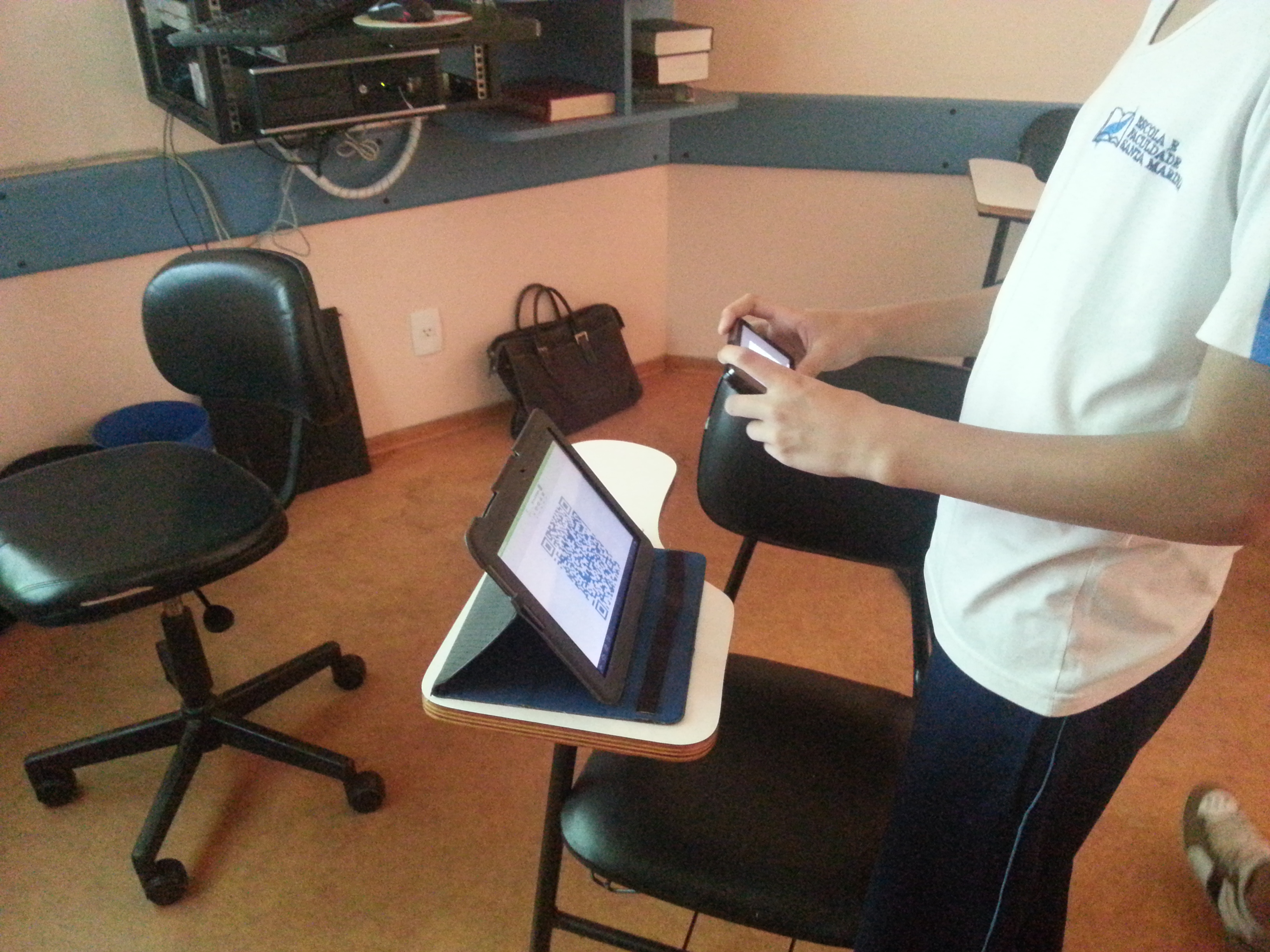
Smartphones during EFL classes? How can that be productive?
In this post I intend to share my experience with QR (Quick Response) codes and how they can be used to engage students in simple activities in the classroom.
I often come across students and fellow teachers who have not heard about QR codes at all. So this is an opportunity to get to know a tech resource that has a variety of uses for many purposes, including learning English.
Here’s a video that illustrates how QR codes work:
As a way of checking how familiar your groups are with this resource, the video below could be shown as a way of attracting students’ attention to one of the possible uses and how that relates to their experience of using mobile devices.
Sharing my experience
When I first came across the concept of QR codes for classroom use, the main idea was to use them to link to websites and have students work in small groups. Ok, but the majority of my students haven`t got 3G access, they rely on wi-fi connection, which is not yet available where I work, limiting the number of devices that could be used.
Researching a bit more, I realized that there are ways of using QR codes offline; among them is the option of TEXT. There are several services that offer this functionality, including the one I use, Kaywa. You can type up to 160 characters, enough space for a full sentence, a question or even clues.
Possible offline usages:
The option TEXT, which can be accessed offline is the first one I tried. Here are some of the different approaches I have tested:
- Vocabulary revision – you type some clues as to the words/collocations you want the students to remember. Students have to work out the words based on the clues you provide
- Warm up questions – type questions or statements and have students exchange their ideas on the topic
- Vocabulary riddles – you name it; the possibilities are endless!
You can even supply different groups of students with different codes. Afterwards, students report their findings to their classmates.
How about getting started? If you have a smartphone, go to your app store/market and download a QR code scanner.
Now, hands on practice:
The QR codes below have a quick description of a problem. As students scan the code they have to come up with suitable pieces of advice for each case and share their thoughts.
Try scanning these codes (if you can’t, I’ve added the message that appears):
The message that appears is: “A friend has been feeling extremely tired and sleepy. His/ Her concentration ability has been very low.”
The message that appears is: “Your cousin, who is 16 years old, has no idea what to study at college or what career to have. He/ She has been very confused.”
The uses suggested are starting points for student discussion, while engaging them by using their mobile phones in the classroom with a meaningful problem-solving purpose.
It goes without saying that this tech resource should be used as a way of adding variety in the classroom and promoting peer collaboration. One device can be shared by a group of students, or they can each use their own. The beauty of it is that no 3G or wi-fi connection is needed for students to participate.
Have in mind that regardless of the style of activity you choose, you should keep this part of the activity short in order to maintain focus on the language.
After their first experience in the classroom, students start noticing all the publicity and media which makes use of QR codes. Knowledge that goes from the classroom to their everyday lives.
Can you think of other possibilities for classroom use? Have you ever tried using QR codes with different age ranges?